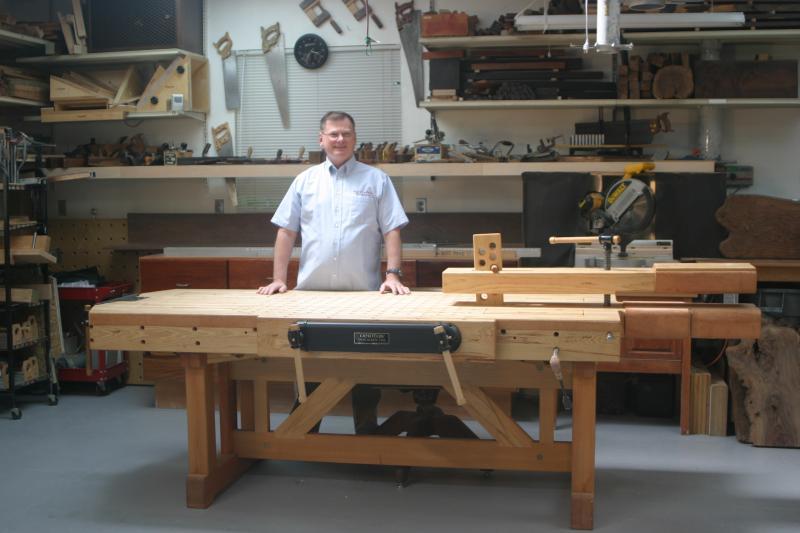
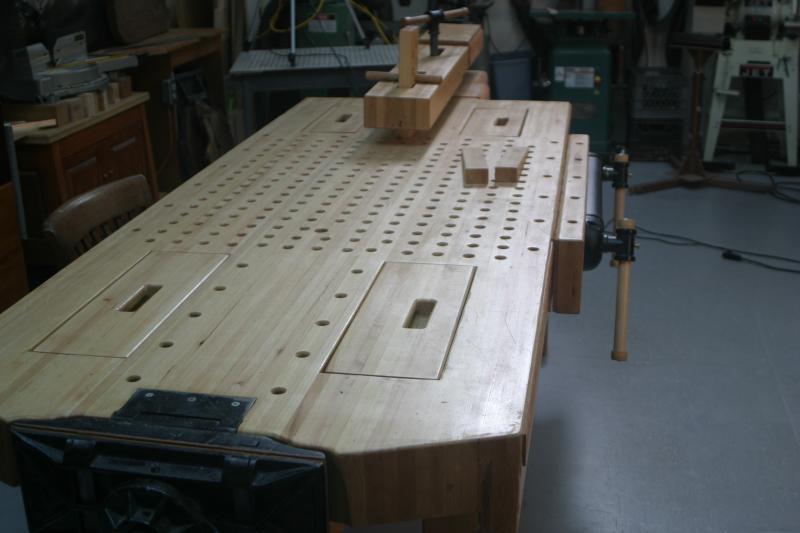
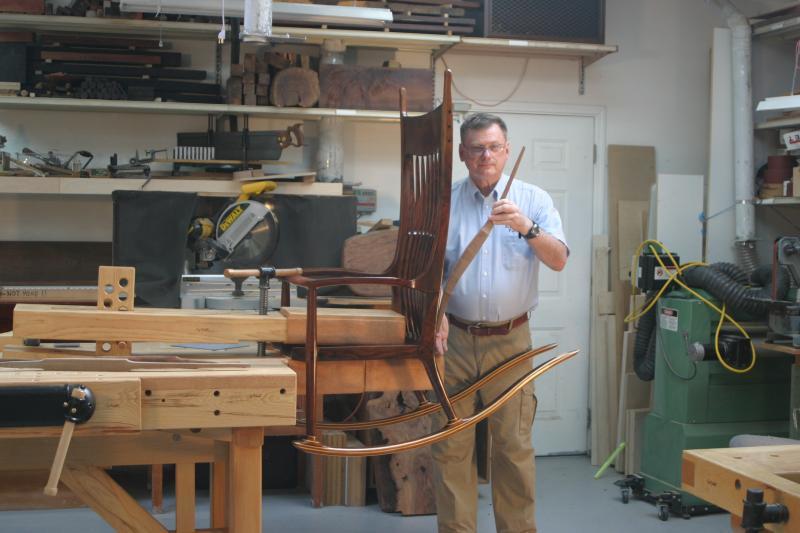
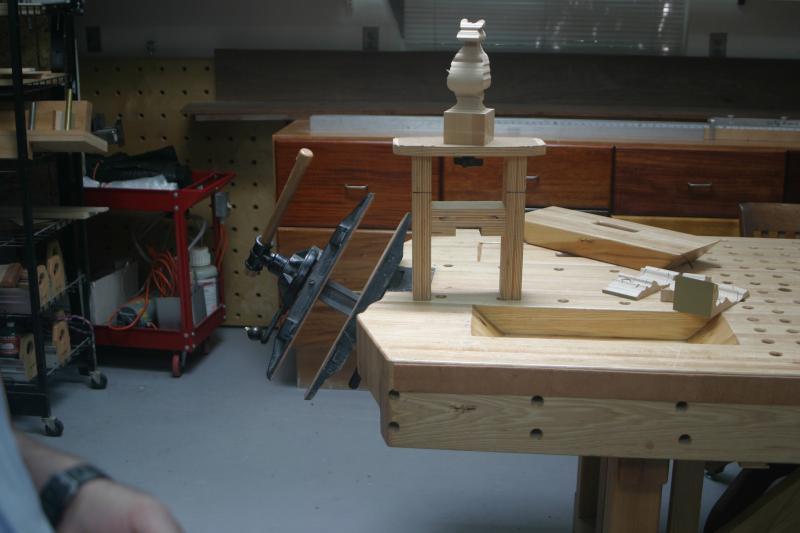
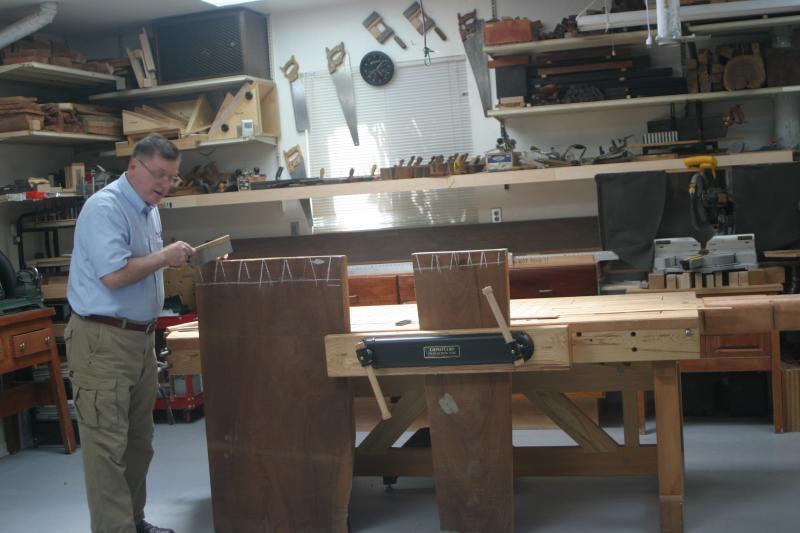
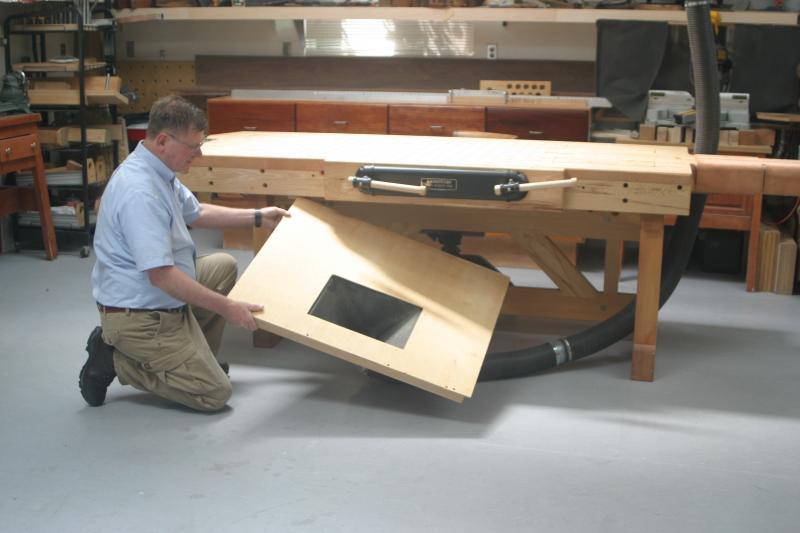
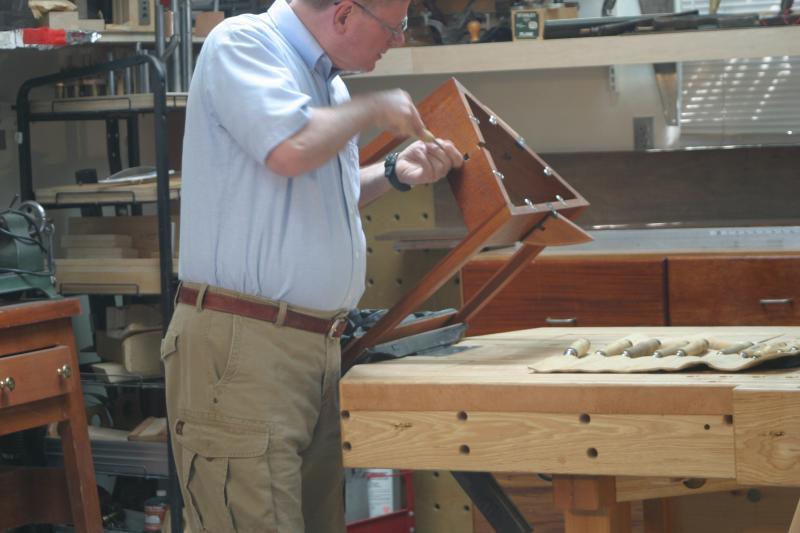

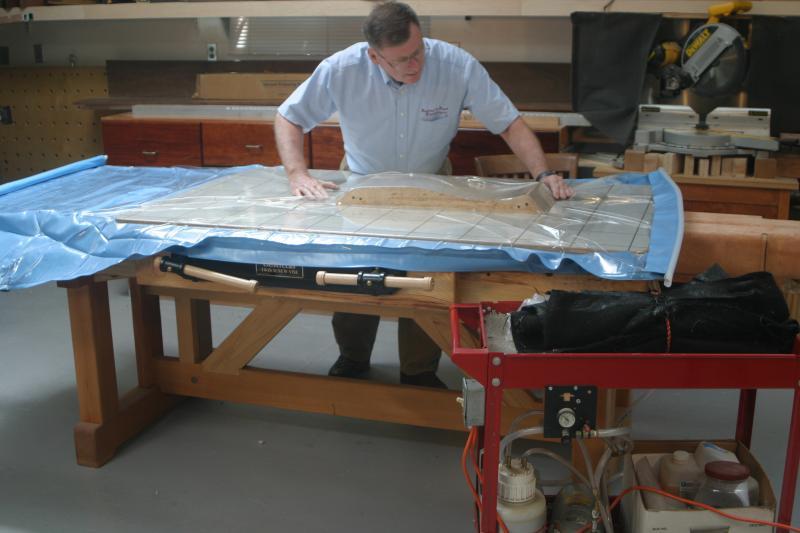 FOSTER WORKBENCH and FOSTER VISE
FOSTER WORKBENCH and FOSTER VISE
I would like to introduce you to a new workbench design that I came up with over the last few years. I started woodworking when I was nine and soon discovered that I like to not only build things that were beautiful but a challenge to build. With that in mind I ended up switching from one type of woodworking to another from joinery to steam bending, to marquetry to sculptured furniture, and anything else that struck my fancy.
The idea for the workbench started a few years back when I was asked to lead a group of local woodworkers in building workbenches. This was because I had thought about 45 classes in my shop with 240 students and all of them loved the European-style workbench that I had. I now had a problem in that what kind of the workbench to build because I one already that worked really well for flat cabinet work.
Because of the problems I’ve had doing steam bending and making sculptured furniture I wanted to make some changes to any new workbench that I built. I wanted to be able larger size, heavier weight when a vacuum table able to do steam bending wanted downdraft table for sculpturing rocking chair seats, lots of holds for bench dogs, and a chair vise to hold sculptured rocking chairs were being assembled. I wanted a single piece frame so that my knees would have a place to go underneath what I said and do close-up work.
I designed a totally new workbench, the new FOSTER WORKBENCH© that includes the FOSTER CHAIR VISE© as well as the Vertas® twin screw and a great Emmert pattern makers vise. This workbench as far as I can tell, can be used to do any, and all types of woodworking.
I approached three woodworking magazines to see if they would like me to write a construction article but they all declined. But I want the woodworking community to see a new approach to a workbench, not a rehash of a 300-year-old workbench.
I uploaded to YouTube 40 videos outlining different ways to use the foster vise for woodworking and furniture construction. You can see the first one at the following address the rest of them can be found on YouTube under the name FOSTER WORKBENCH © or FOSTER VISE ©,
Hello Folks,
If you want to watch all the videos, about 38 minutes, at one time please go the following link:

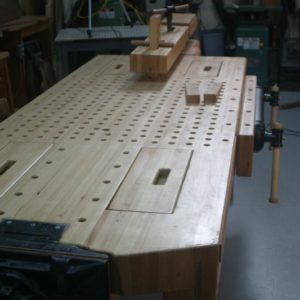
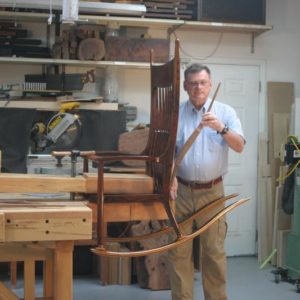
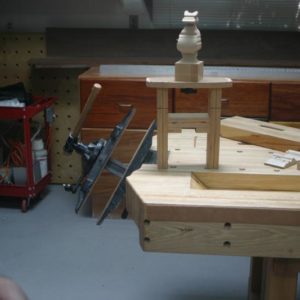
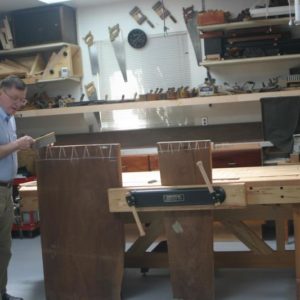
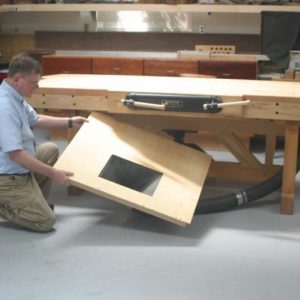
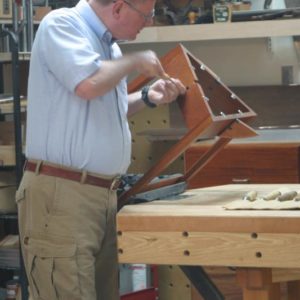
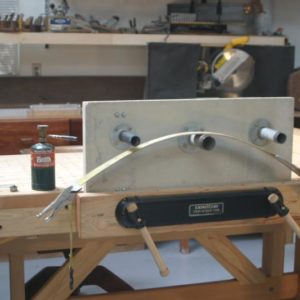
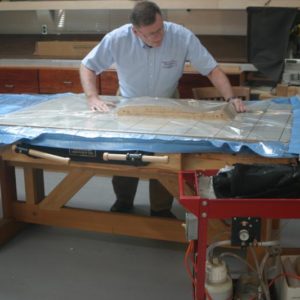














Replies
A shortcomings of the foster workbench is that the holes in the top prevents you from doing fine intricate work like installing hinges or other fine work, with small parts.
To overcome this deficiency I decided to build a tray out of maple plywood with a rim to corral any parts that may try to run away from you. The front edge of the tray is open going up but does have a lower lip going down to catch on the front edge of the foster workbench.
The tray can also be raised up on blocks, to do work with clamps from underneath, as shown in the next to last picture, where I am marking and measuring doors for a cabinet.
The last picture shows the Alvin marquetry cutting pad, with tools for cutting veneer.
A shortcomings of the foster workbench is that the holes in the top prevents you from doing fine intricate work like installing hinges or other fine work, with small parts.
To overcome this deficiency I decided to build a tray out of maple plywood with a rim to corral any parts that may try to run away from you. The front edge of the tray is open going up but does have a lower lip going down to catch on the front edge of the foster workbench.
The tray can also be raised up on blocks, to do work with clamps from underneath, as shown in the next to last picture, where I am marking and measuring doors for a cabinet.
The last picture shows the Alvin marquetry cutting pad, with tools for cutting veneer.
This forum post is now archived. Commenting has been disabled